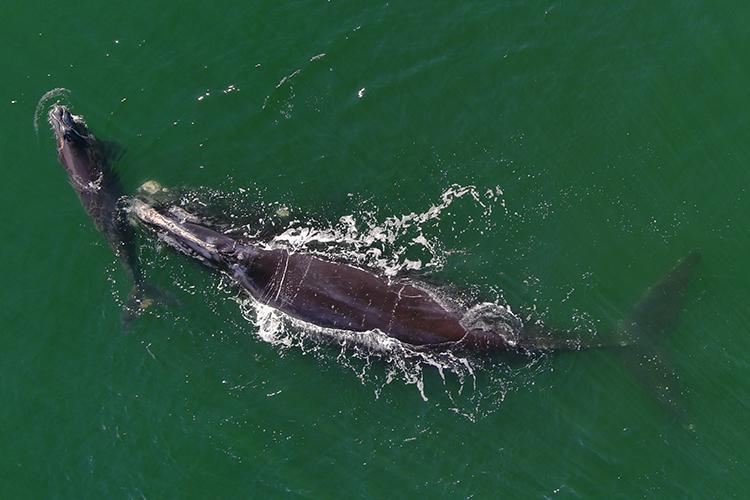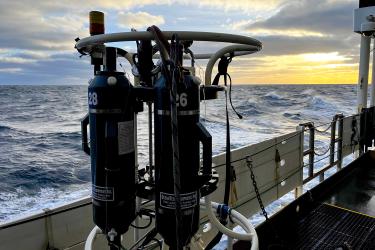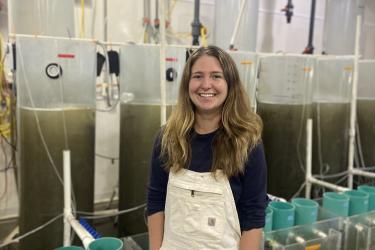Each winter, the members of the Whale Ecology Branch team and I load up our cameras, drones, the R/V Selkie, and other research gear and head south to Fernandina Beach, Florida. At the same time, a subset of the critically endangered North Atlantic Right Whale population also makes the journey. However, we likely get there slightly faster than it takes the whales to swim nearly 1,000 nautical miles south. The migration destination: the only known calving ground for North Atlantic right whales. The calving ground lies in the coastal waters of the southeastern United States. Fenway recently made this long trek to give birth to her fourth known calf.
While in Florida, we establish a field station to help document right whale moms with their newborn calves. Using both aircraft and vessels, biologists track and monitor the right whales in the warm, protected nearshore waters of Georgia and north Florida. Our research group uses small boats to collect photo-identification data, skin samples, and conduct surveys using Unoccupied Aircraft Systems, or drones. Drones help us to better measure growth rates of the new calves and assess the health of individual whales.
This work relies on the close collaboration with our partners in the region:
- NOAA’s Southeast Regional Office
- Florida Fish and Wildlife Research Institute
- Florida Fish and Wildlife Conservation Commission
- Georgia Department of Natural Resources
Fenway is a female right whale who is at least 28 years old. She has been seen several times in the past year along her journey from the feeding ground in Canada to the calving grounds. After our colleagues at Florida Fish and Wildlife first spotted Fenway and her calf on January 11, 2024, we had the opportunity to fly the drone over the pair on January 14, 2024.
Our drone has a few after-market add-ons, like 3-D printed legs. This helps us to hand catch and release the drone while operating from small boats like the R/V Selkie. Our drone also has a laser altimeter that provides more precise measurements of the whale’s physical dimensions.
While flying our drone, we stayed a safe distance away so we didn't disturb the mother and calf. After we collected our drone imagery, the Florida Fish and Wildlife Conservation Commission’s vessel-based team collected a small biopsy sample from both the mother and calf. These samples can be used for a suite of studies including genetics, transcriptome work, and hormone analyses.
Although Fenway and her new calf haven’t been spotted since January 14, we’re hopeful we will see the pair again before we all begin our long migrations north. Right whale food is scarce in southeastern waters, so mothers aren’t able to recharge the stores needed to sustain a nursing calf. That’s a long fast for mama! The whales will likely head to the northern feeding grounds off the coast of New England soon. If we don’t see them again in the calving grounds, we’re almost certain to see them in the zooplankton-rich waters of Cape Cod Bay off the Massachusetts coast in the spring. It’s when and where most of the mother-calf pairs are next spotted—just in time for Opening Day at Fenway Park!





